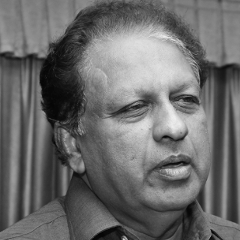Trial by fire for Trump next month

Mail This Article
A feature of the US democratic system is that the president does not require a majority in the US Congress as he is directly elected and not a leader of the majority party in the Parliament. But he needs the support of both the Senate and the House of Representatives to push through his agenda. The US Congress acts independently, though it generally acts on party lines, except when crucial policy changes proposed by the president go against the established positions of the members of his own party.
President Donald Trump today has Republican majorities in the Senate and the House and that has enabled him to get his way, as in the case of the Senate confirmation of Justice Kavanaugh despite the serious sexual misconduct charges against him. The Republicans appeared to waver at one time, but they eventually handed a major victory to the President. Trump got elected despite strong objections in the Republican Party, but the party instinctively rallied around him for self preservation.
The nightmare for the president at this time is the midterm elections, scheduled for November 6, 2018, which may change the Congressional situation against him, as all the members of the House of Representatives, 35% of the Senators, the Governors and the local legislators will be facing votes on that day, as it happens every two years. After two years in office with his highly controversial Presidency, it remains to be seen how his Republican Party is faring in the eyes of the American public.
The polls are showing a clear possibility of a so-called “blue wave” giving the Democrats control of the House, though no change is expected in the Senate. A liberal base hoping to derail Mr Trump's agenda has energised activists in key races, endangering a number of Republican incumbents across the country.
The elections mark the mid point in a president's four-year term – and although Mr Trump is not on the ballot, in many ways the results will be seen as a referendum on his accomplishments and how voters feel about the US president.
The entire House will face elections as all the 435 members serve only two-year terms. This has been described as a weakness of the US Congress. On the other hand, the system keeps the Congressmen on their toes, with no automaticity of re-election. Senators hold four year terms, but one-third of them have to face elections every midterm. Some 35 out of the Senate’s 100 seats will be on the ballot and 36 state governors are up for election. A number of state-wide and local offices are also being elected on the same day. The Republicans presently control 33 out of 50 governorships, which are powerful positions on account of their huge budgets and their authority to implement the laws of the states, which are not uniform. Governorships are also seen as stepping stones to the presidency. Democrats have their eyes set on capturing 23 Republican Governorships, which are coming up for re-election. The so-called swing states, which supported Trump may well shift to the Democratic side in November.
The midterm elections will shape US politics for the next two years of President Trump’s term. If the House continues to be controlled by the Republicans, it will be easier for the President to build the border wall with Mexico, make further tax cuts and to repeal Obamacare, some of his pet projects. If the Democrats regain control of the House, many of these moves will be in jeopardy. The party will gain more seats on Congressional committees, which will strengthen the investigations against President Trump, notably the allegation that he obtained Russian support to influence his election.
The Republican party is likely to retain its majority in the Senate as only 35 of the 100 seats are up for election, 26 of which are already held by Democrats. Democrats would have to win all its Senate races and pick up two Republican seats in order to swing the majority. This is highly unlikely.
The issues that are getting the most attention in the election debate are the economy, immigration and impeachment. The US economy is doing well with low unemployment rates and rising wages. Though President Trump is taking the credit for it, some economists say that what he enjoys today is the result of Obama’s reforms. Trump's tax cuts for corporations have increased the country's deficit by 33 per cent in the last year to $895 billion. Immigration is a divisive issue, with Democrats highlighting the Trump administration's decision to separate migrant children from their parents as part of its "zero-tolerance" policy. The Republicans are likely to lose the votes of the youngsters and minorities on this account.
Undoubtedly, the midterm election will be a trial by fire for President Trump as it will impact on the current investigations and even pave the way for his impeachment. But it is not unusual for Presidents to lose the midterm vote and still continue to survive and flourish. A majority for the Democrats in the House will naturally dampen his enthusiasm for certain partisan measures, as it happened in the case of Bill Clinton and Barack Obama. Whatever the results of the midterm, President Trump may serve his full term and even win a second term, but his road ahead will be hazardous without a Republican majority in the Congress. For Donald Trump, even one term as president was a windfall and a second term a bonanza.


